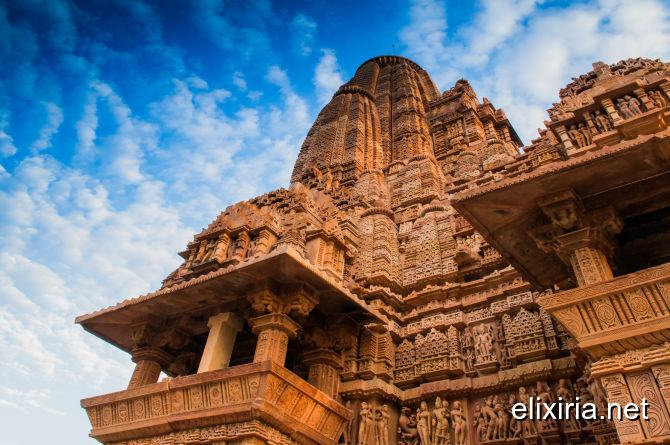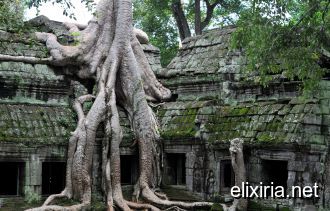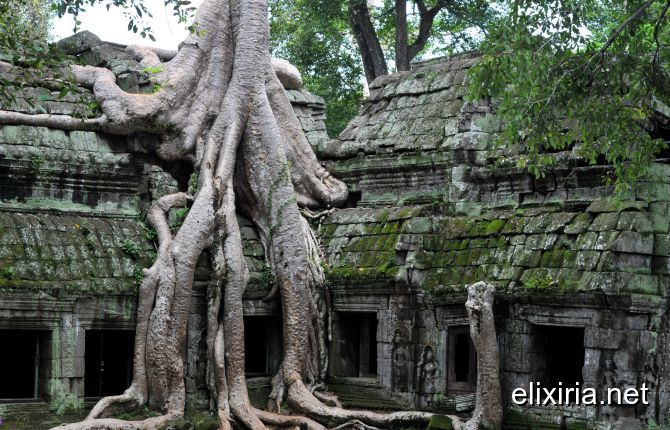“
Khajuraho temples were built over a span of 200 years between 950 to 1150 during the reign of the Chandela kings. The Khajuraho temples are made of sandstone and no mortar is used. The columns and architraves are built with megaliths that weigh up to 20 tons. Today, of the original 85, only 22 have survived the ravages of time.
The Khajuraho temples contain sexual or erotic art outside the temple or near the deities. Some of the temples that have two layers of walls have small erotic carvings on the outside of the inner wall. It has been suggested that these suggest tantric sexual practices. Some 10% of the carvings contain sexual themes and those reportedly do not depict deities but rather sexual activities between people. The rest depict the everyday life. For example, those depictions show women putting on makeup, musicians, potters, farmers, and other folk. The mundane scenes are all at some distance from the temple deities. A common misconception is that, since the old structures with carvings in Khajuraho are temples, the carvings depict sex between deities.
The most important group of monuments is massed in the western zone, not far from the archaeological museum, including the temples of Varaha, Lakshmana, Matangeshwara, Kandariya, Mahadeva Chitragupta, Chopra Tank, Parvati, Vishwanatha and Nandi. But the east and south groups also comprise noteworthy complexes (the temples of Ghantai, Parshvanath, Adinath, Shantinath, Dulhadeo, Chaturbhuja).
The Khajuraho temples contain sexual or erotic art outside the temple or near the deities. Some of the temples that have two layers of walls have small erotic carvings on the outside of the inner wall. It has been suggested that these suggest tantric sexual practices. Some 10% of the carvings contain sexual themes and those reportedly do not depict deities but rather sexual activities between people. The rest depict the everyday life. For example, those depictions show women putting on makeup, musicians, potters, farmers, and other folk. The mundane scenes are all at some distance from the temple deities. A common misconception is that, since the old structures with carvings in Khajuraho are temples, the carvings depict sex between deities.
The most important group of monuments is massed in the western zone, not far from the archaeological museum, including the temples of Varaha, Lakshmana, Matangeshwara, Kandariya, Mahadeva Chitragupta, Chopra Tank, Parvati, Vishwanatha and Nandi. But the east and south groups also comprise noteworthy complexes (the temples of Ghantai, Parshvanath, Adinath, Shantinath, Dulhadeo, Chaturbhuja).





